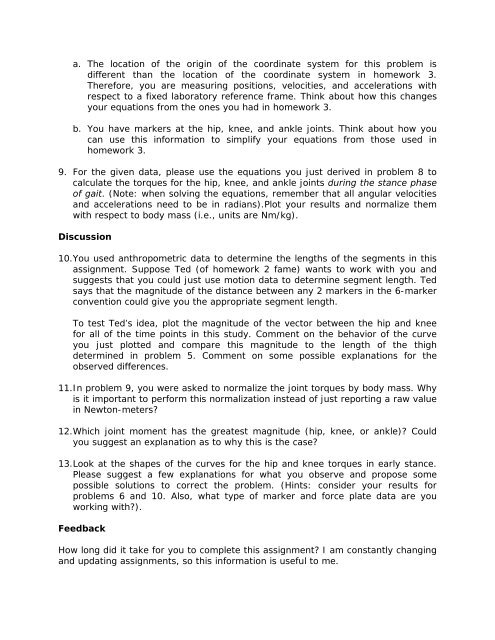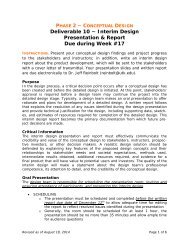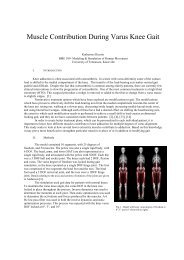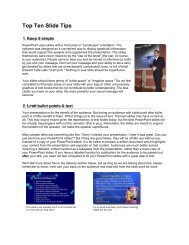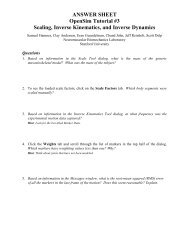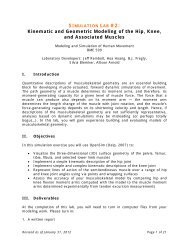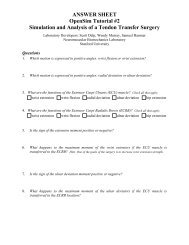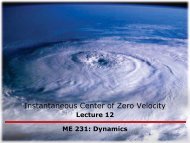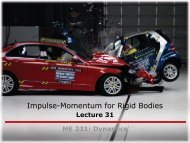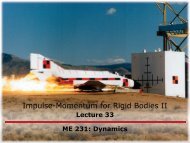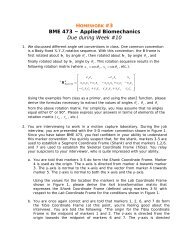Biomechanics of Movement
Biomechanics of Movement
Biomechanics of Movement
Create successful ePaper yourself
Turn your PDF publications into a flip-book with our unique Google optimized e-Paper software.
a. The location <strong>of</strong> the origin <strong>of</strong> the coordinate system for this problem isdifferent than the location <strong>of</strong> the coordinate system in homework 3.Therefore, you are measuring positions, velocities, and accelerations withrespect to a fixed laboratory reference frame. Think about how this changesyour equations from the ones you had in homework 3.b. You have markers at the hip, knee, and ankle joints. Think about how youcan use this information to simplify your equations from those used inhomework 3.9. For the given data, please use the equations you just derived in problem 8 tocalculate the torques for the hip, knee, and ankle joints during the stance phase<strong>of</strong> gait. (Note: when solving the equations, remember that all angular velocitiesand accelerations need to be in radians).Plot your results and normalize themwith respect to body mass (i.e., units are Nm/kg).Discussion10.You used anthropometric data to determine the lengths <strong>of</strong> the segments in thisassignment. Suppose Ted (<strong>of</strong> homework 2 fame) wants to work with you andsuggests that you could just use motion data to determine segment length. Tedsays that the magnitude <strong>of</strong> the distance between any 2 markers in the 6-markerconvention could give you the appropriate segment length.To test Ted’s idea, plot the magnitude <strong>of</strong> the vector between the hip and kneefor all <strong>of</strong> the time points in this study. Comment on the behavior <strong>of</strong> the curveyou just plotted and compare this magnitude to the length <strong>of</strong> the thighdetermined in problem 5. Comment on some possible explanations for theobserved differences.11.In problem 9, you were asked to normalize the joint torques by body mass. Whyis it important to perform this normalization instead <strong>of</strong> just reporting a raw valuein Newton-meters?12.Which joint moment has the greatest magnitude (hip, knee, or ankle)? Couldyou suggest an explanation as to why this is the case?13.Look at the shapes <strong>of</strong> the curves for the hip and knee torques in early stance.Please suggest a few explanations for what you observe and propose somepossible solutions to correct the problem. (Hints: consider your results forproblems 6 and 10. Also, what type <strong>of</strong> marker and force plate data are youworking with?).FeedbackHow long did it take for you to complete this assignment? I am constantly changingand updating assignments, so this information is useful to me.


